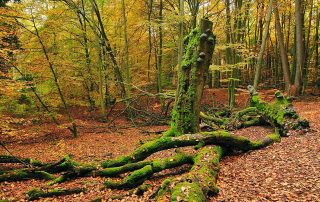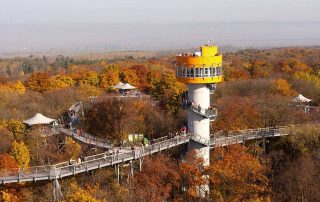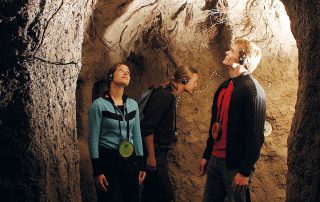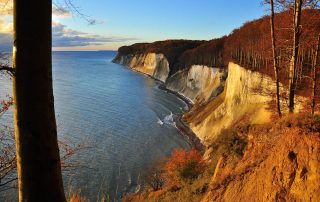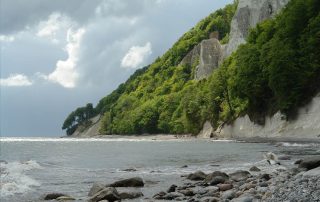
Primeval Beech Forests of the Carpathians and the Ancient Beech Forests of Germany
They are really the original inhabitants of Europe: without human intervention, beech trees would still cover large areas of continental Europe. Today, unspoilt lowland beech forests are found nowhere else in the world but in Germany. The Ancient Beech Forests of Germany UNESCO World Natural Heritage site therefore offers a fascinating, romantic and incredibly diverse picture of the original European landscapes. They are an extension to the Primeval Beech Forests of the Carpathians, an existing cross-border World Heritage property.
Romantic painters were inspired by the captivating backdrop of beech forests, chalk cliffs and seascapes in the modern-day Jasmund National Park on the island of Rügen. Due to their inaccessible clifftop location, these expanses of woodland have never been used for forestry purposes and now present a dynamic mosaic of open areas, thicket and genuine ancient woodland.
The beech forests in the Serrahn section of Müritz National Park in Mecklenburg-Western Pomerania are at the heart of the Mecklenburg Lakes region. For a long time, the grand dukes of Mecklenburg-Strelitz indulged their passion for hunting here, prohibiting any other use of the forest. This resulted in an enchanting hilly wooded landscape full of lakes and fens.
Just an hour’s drive from Berlin, Grumsin Forest in Brandenburg’s Schorfheide-Chorin biosphere reserve is a fascinating combination
of sprawling forests and open countryside. The deep valleys and prominent peaks bear testament to the impact of glaciers in the last ice age.
The beech forests in Hainich National Park in Thuringia represent an important chapter in the history of the two Germanies. In the days of the GDR, the region was a restricted military area and this has allowed the flora and fauna to grow more or less undisturbed. Today, it boasts an impressive variety of tree species and a glorious carpet of blooms on the forest floor in spring.
The steep, rocky slopes of the Kellerwald-Edersee National Park in Hessen mark the natural border of the beech forests. Walkers will discover bizarre forest formations and mysterious-looking, gnarled trees here. The bays of twisting Lake Edersee, which extend far into the forests, are almost fjord-like.
Primeval Beech Forests of the Carpathians and the Ancient Beech Forests of Germany
UNESCO World Heritage since 2011, extended in 2021
From the selection criteria
Information and Contact
Hessisches Ministerium für Umwelt, Klimaschutz, Landwirtschaft und Verbraucherschutz
Mainzer Straße 80
65189 Wiesbaden
Tel. +49 611-815 16 52


